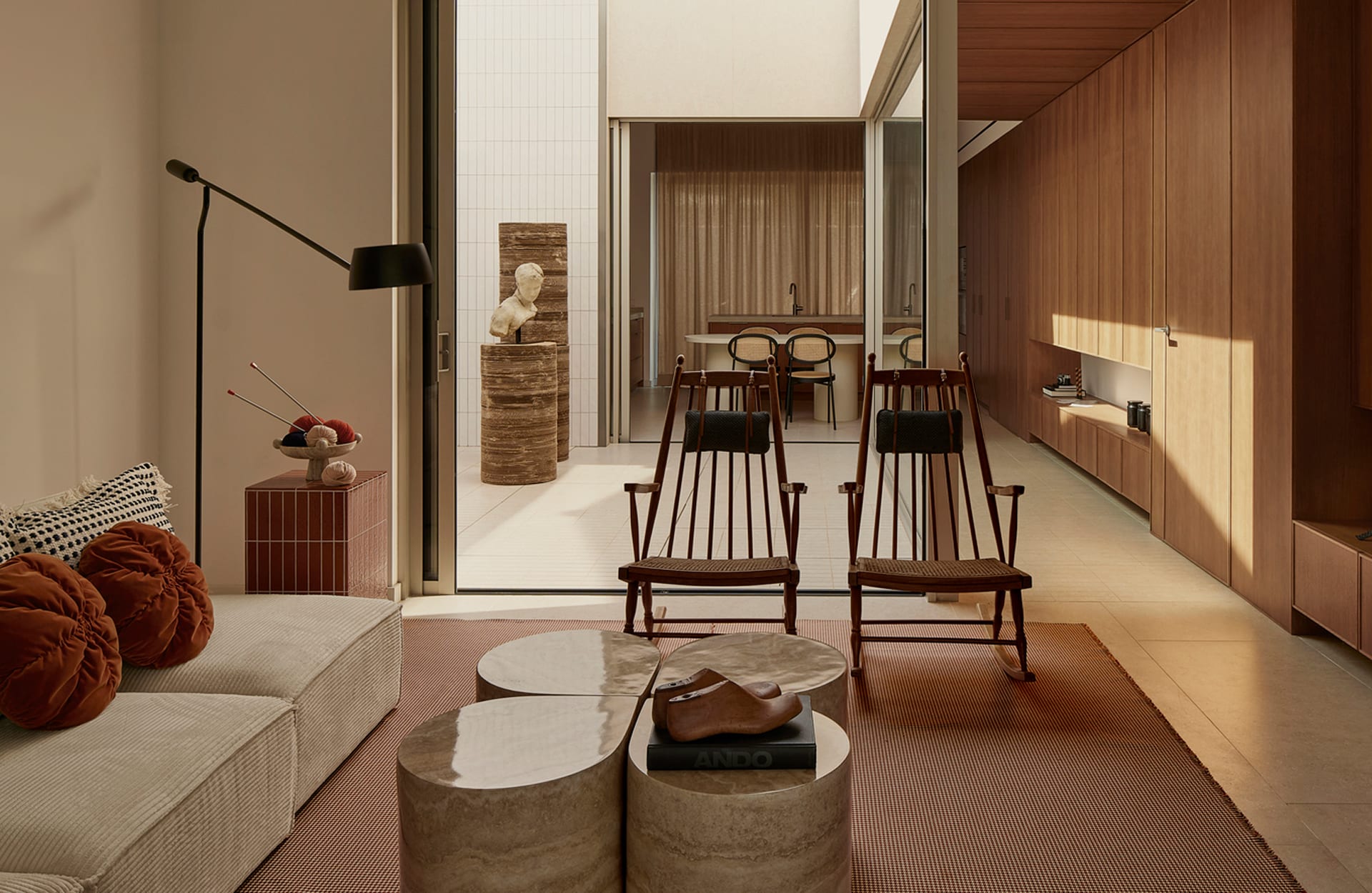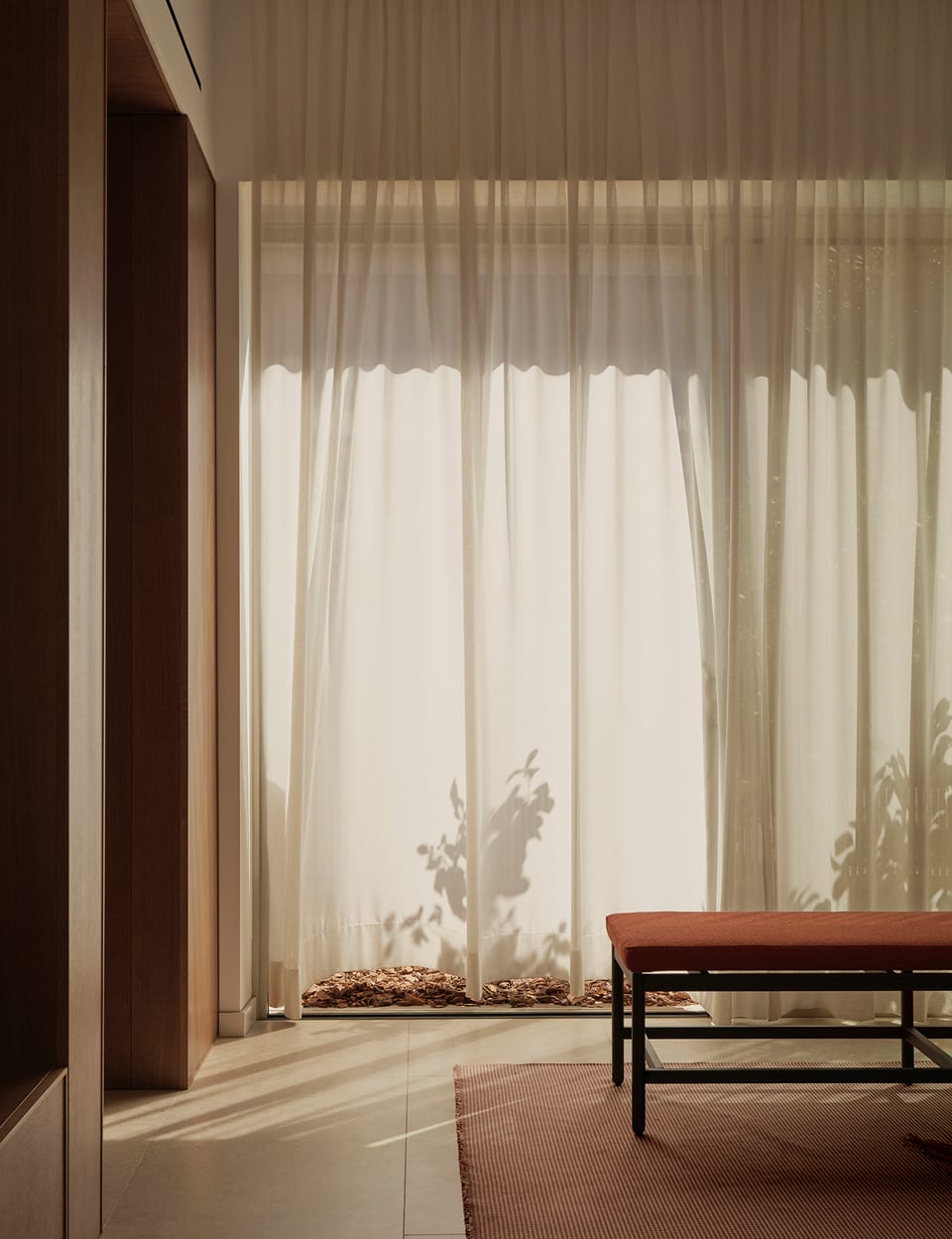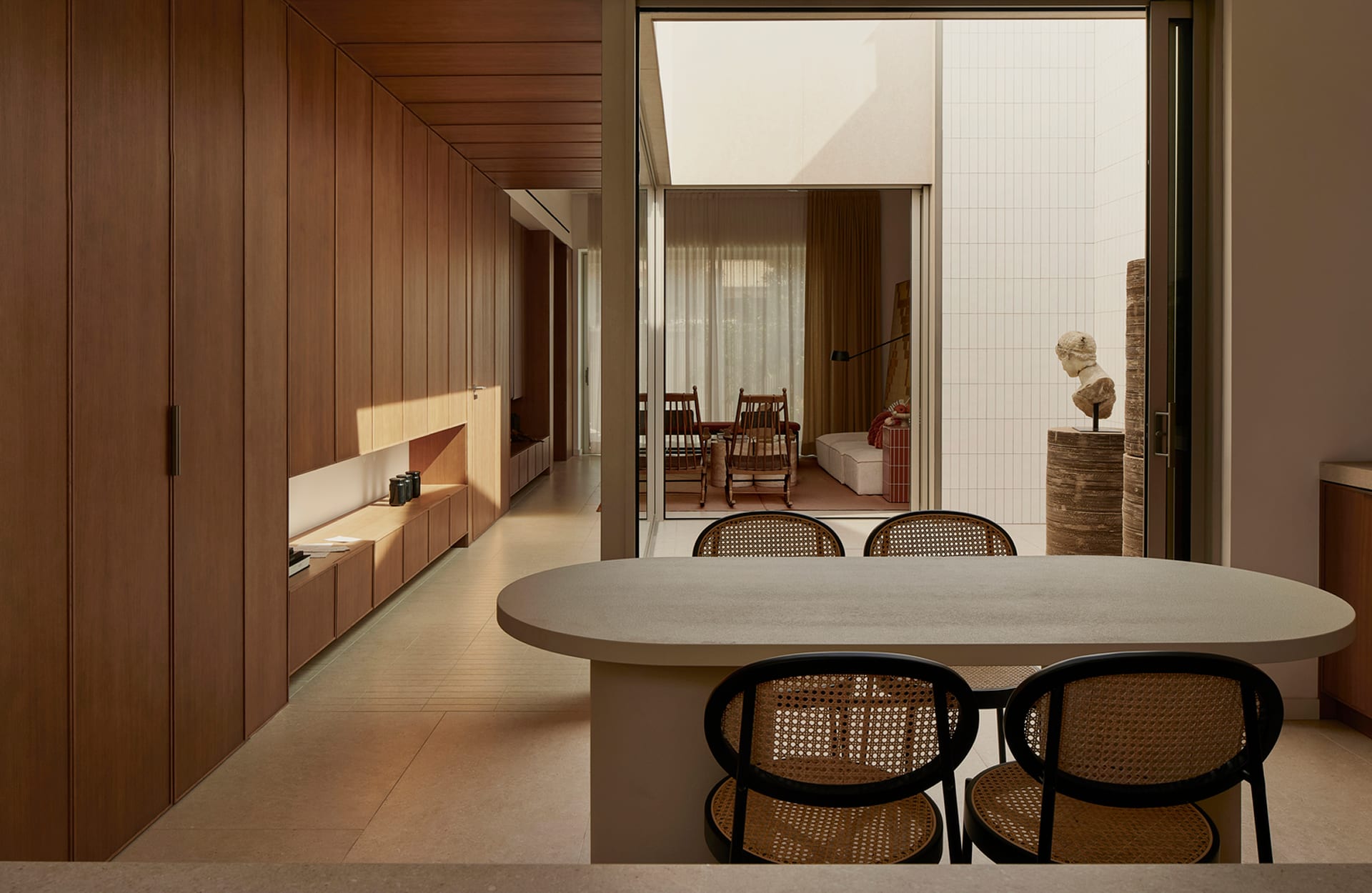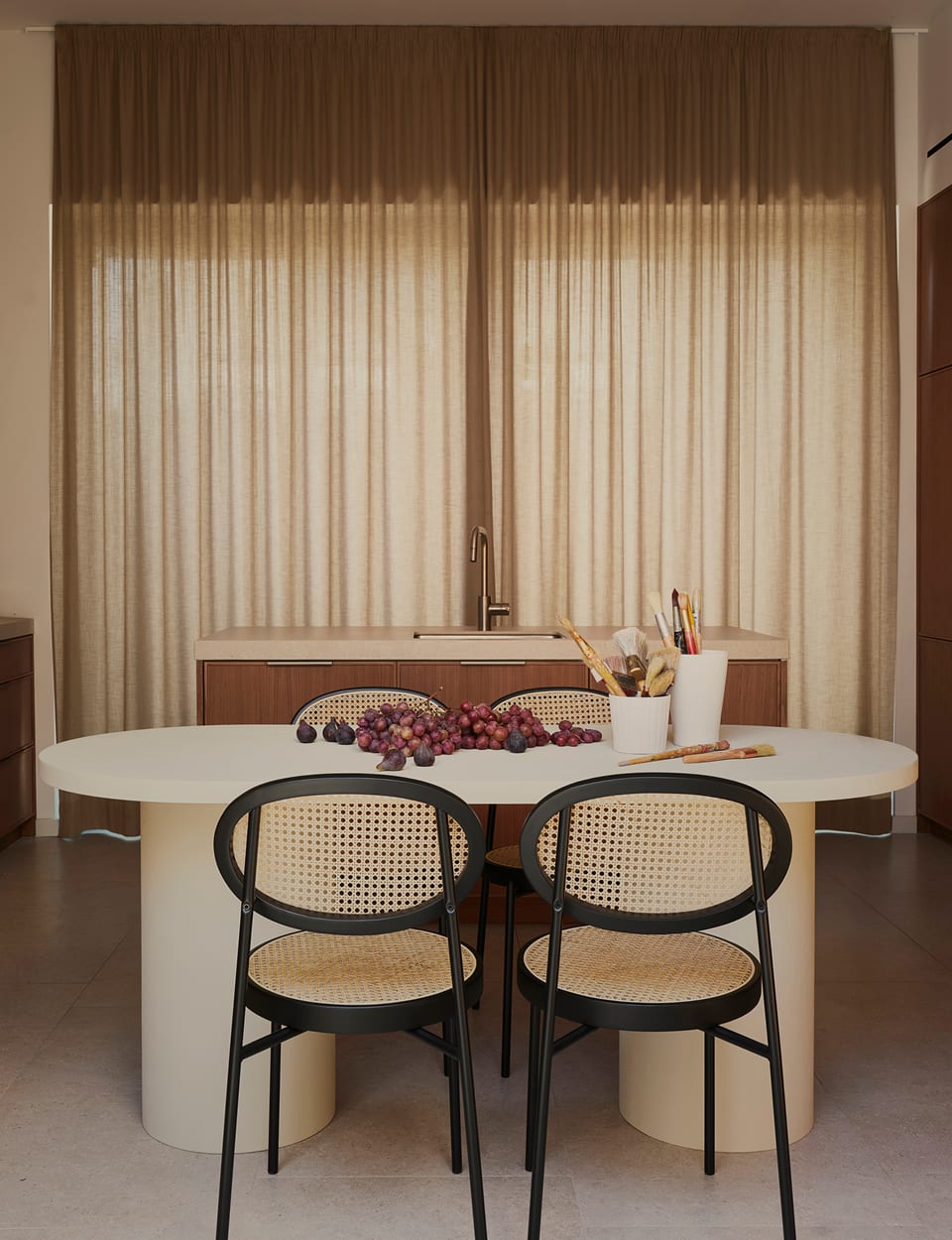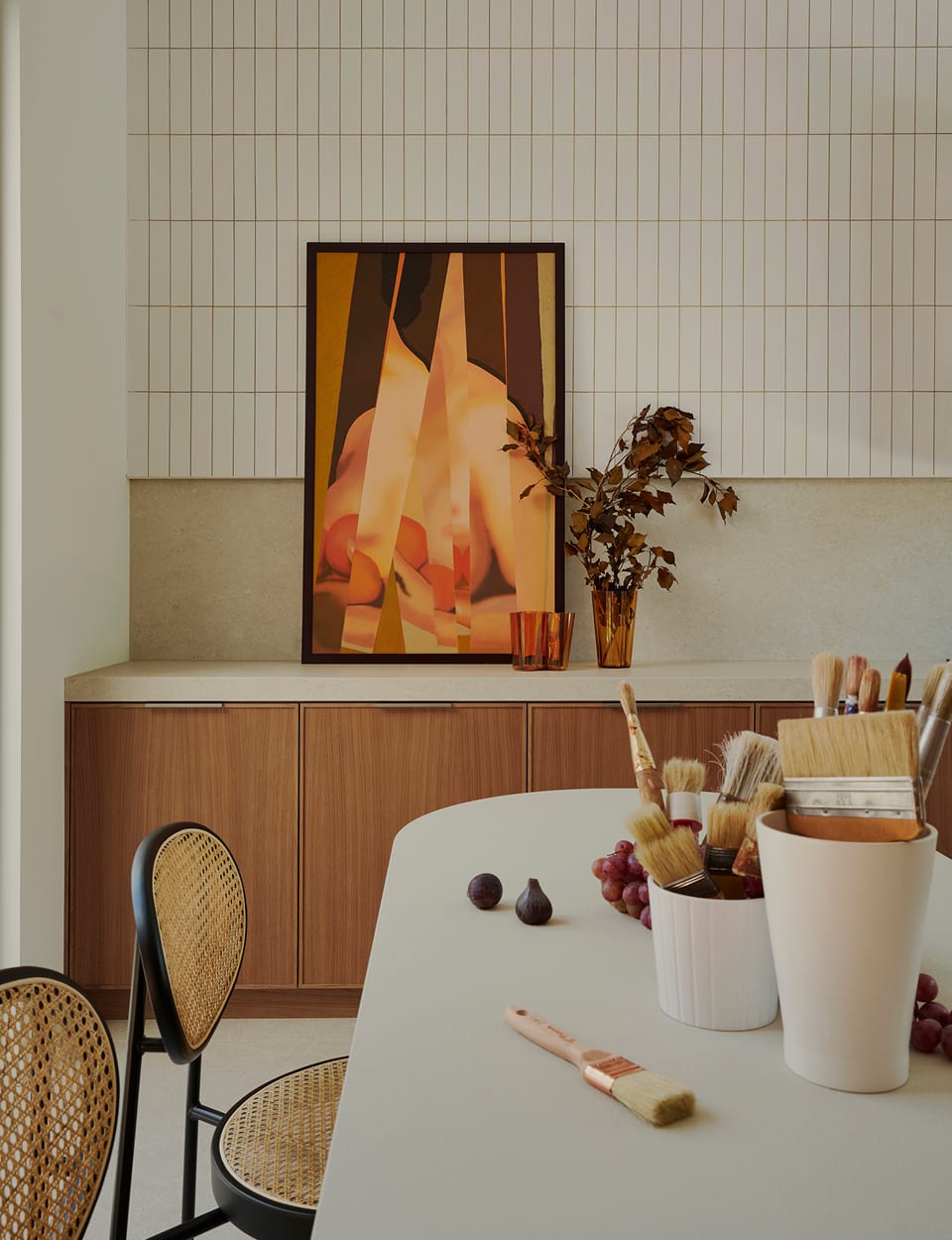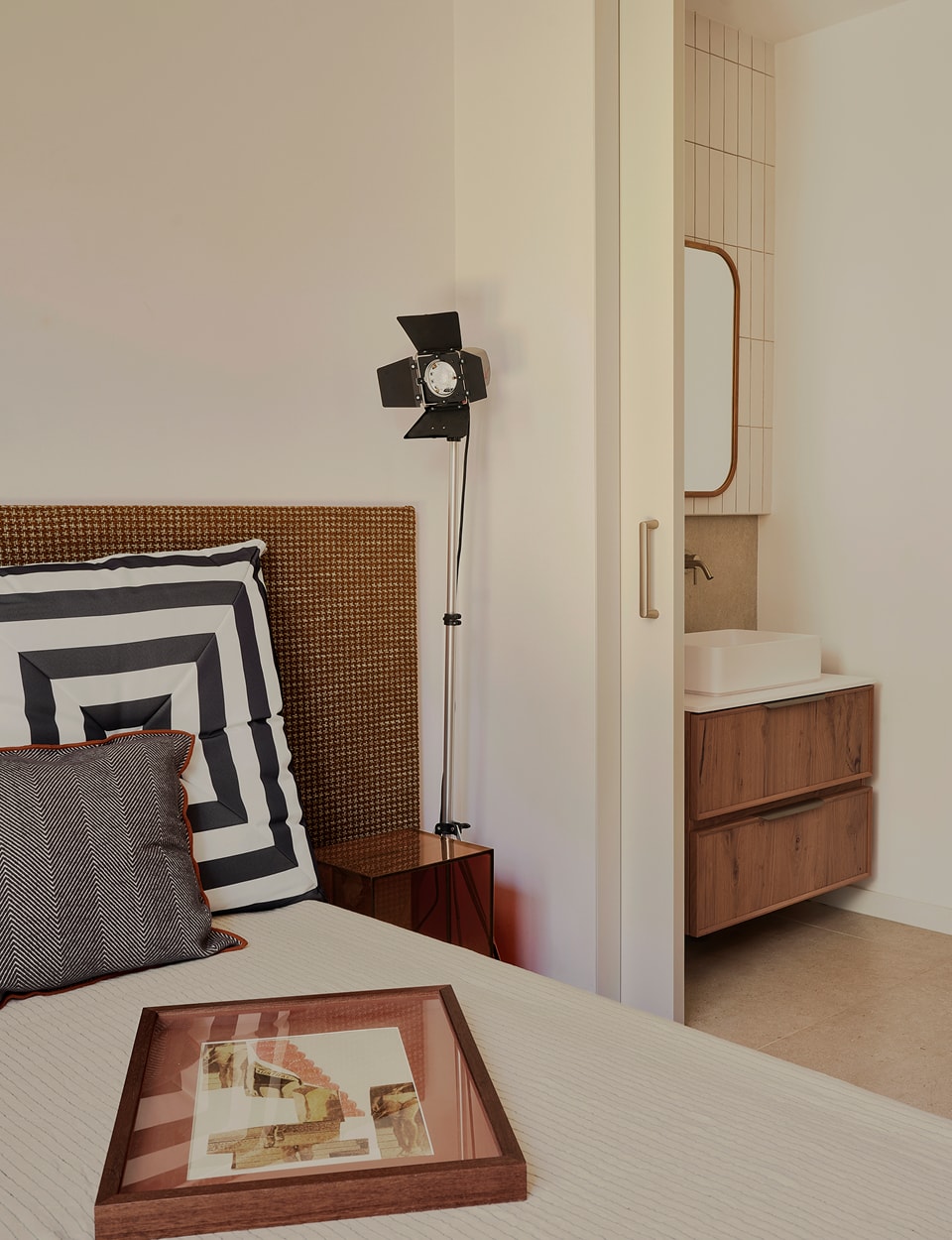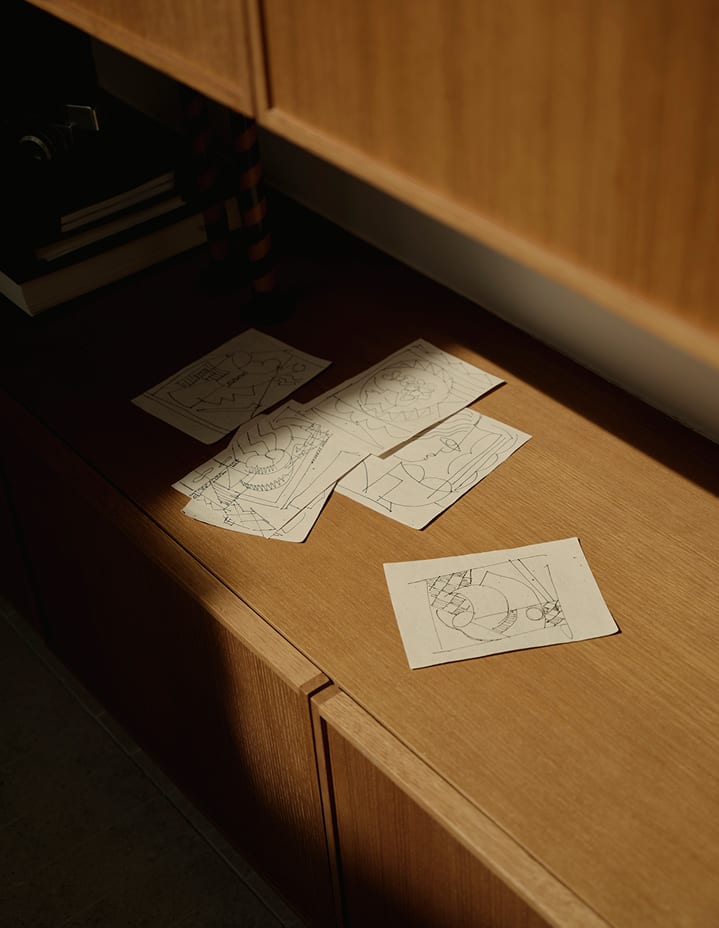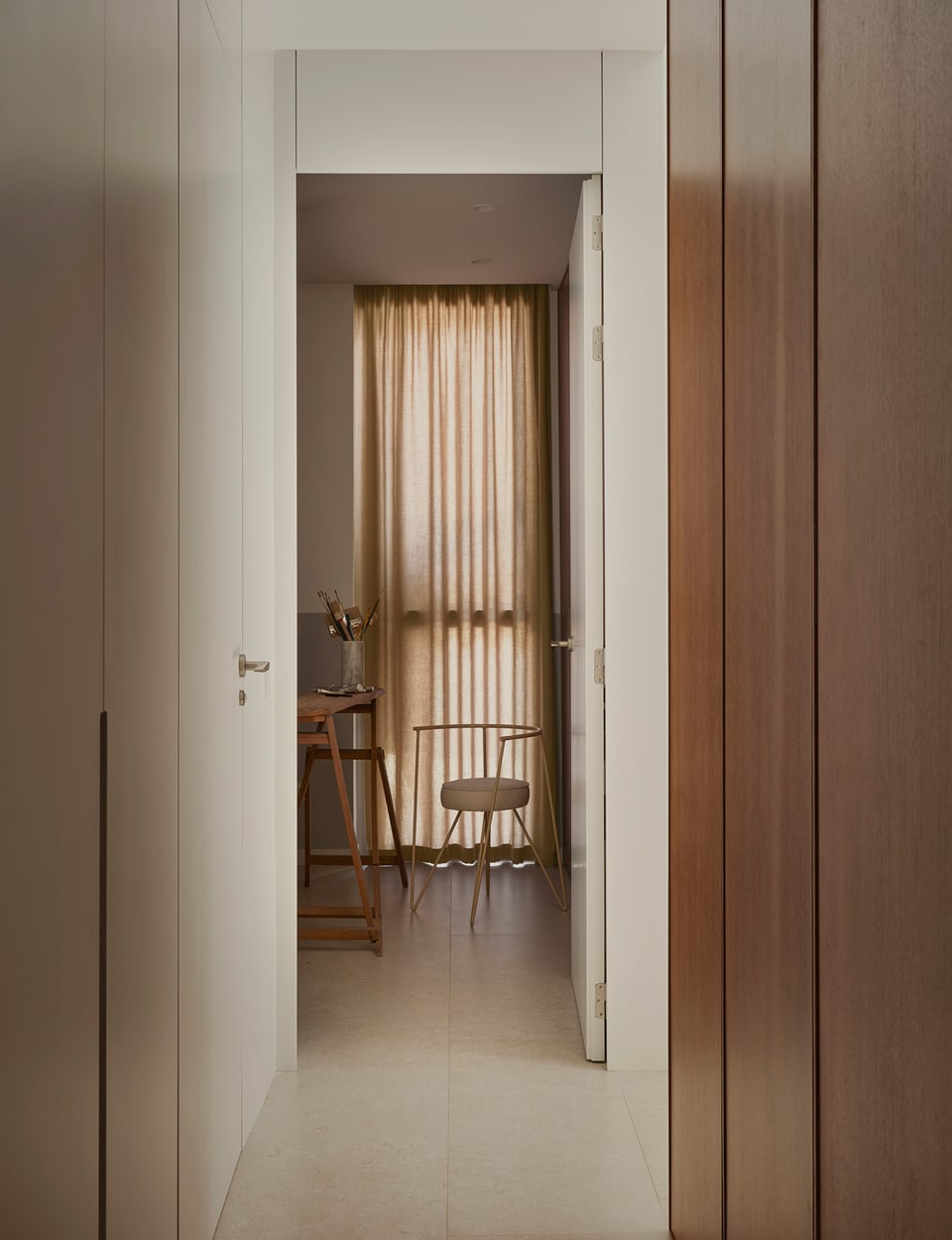
/12
VIRUTA LAB, IS AN ARCHITECTURE AND DESIGN STUDIO WHERE EACH PROJECT IS BORN FROM A UNIQUE CONCEPT. THEIR APPROACH COMBINES SENSITIVITY, AUTHENTICITY, AND A CONTEMPORARY PERSPECTIVE THAT REINTERPRETS THE CLASSICAL, ALWAYS SEEKING WORKS WITH SOUL AND DISTINCT CHARACTER THAT TRANSCEND THE EPHEMERAL TO BECOME LASTING EXPERIENCES.
For those who don’t know Viruta Lab yet: how would you define your studio in one sentence?
We can say that at Viruta Lab we create intimate, signature architecture: each project is born from a unique concept and built with a palette of colors, materials, and details designed to tell personal stories.
How did your paths cross, and what made you decide to embark on this creative journey together?
Chance brought us together in a studio where immediacy and standardization set the rules of that type of architecture. In the end, we wanted to create unique works, with soul and their own breath. That’s how this journey was born, a strange but beautiful balance: two people working as one, four hands building atmospheres that tell stories. Pure tuning fork effect.
Do you remember the first space you designed together and what you learned from it?
Yes, we remember it like it was yesterday: 3,500 handmade paper pinwheels suspended from the ceiling to transform the Las Naves library in Valencia. A competition presenting a project meant to be ephemeral, with few resources, but with the conviction that ingenuity and the strength of the concept could support it. That experience taught us that what matters is not the budget, but the faith placed in the idea. And the poetic part is that what was meant to last only six months has been standing for six years.
How is the dialogue that Casa Gesso establishes with Ángela García Codoñer’s work concretely reflected in the architecture and design?
Casa Gesso reinterprets Ángela García Codoñer’s visual codes: geometry, repetition, and chromatic subtlety in architectural decisions that range from details to the overall atmosphere. Ultimately, the house does not illustrate her work; it interprets and extends it, becoming an extension of her critical and aesthetic thinking.
The interior patio is the heart of the house. How did this decision arise, and what role does it play in the daily experience of the space?
We decided to place the patio at the center of the home because we understood it should be its heart, both physical and emotional. It also naturally responds to listening to the space and responding to its geometry, as well as to its inhabitants and their desire for an intimate outdoor space. The patio typology, in the line of Mies van der Rohe, is for us one of the most beautiful and poetic ways to live.
If there were no budget or time limitations, what project would you love to undertake?
If there were no limits, at Viruta Lab we would love to design a cemetery. It’s a place where architecture transcends function and becomes memory, silence, atmosphere. Just think of works like the Woodland Cemetery in Stockholm by Erik Gunnar Asplund and Sigurd Lewerentz, or the Sayama Lakeside Cemetery in Japan by Hiroshima Nakamura & Nap — spaces that move you because they are designed from the senses. There, light, materials, and especially the concept, can transform mourning into a constructed poetic experience.
Why do you choose The Masie?
What we value about The Masie is its ability to create furniture with its own identity but that also invites interpretation within each project. Their designs convey freshness, honesty, and a certain boldness. They are pieces that don’t aim to be neutral or invisible, but neither do they fall into stridency. That formal and chromatic sincerity connects deeply with our vision of Architecture and Interior Design.
What do your pieces inspire in you?
Your designs inspire us to think that furniture can also be future memory: moments of life that, thanks to a table, a chair, a lamp, become unforgettable.
Which current interior design trend do you think will disappear soon?
More than predicting what will disappear, we like to imagine what we’d like to fade away: the trend of fake materials, those that simulate what they’re not. We believe in returning to authenticity: stone that is stone, wood that is wood, and plaster that breathes like plaster. And with that, recovering the figure of the craftsman who knows their craft and turns it into art.
Favorite piece from The Masie
For us, the Rinu armchair has always won us over; it’s a timeless piece that reinterprets the classic with a contemporary gaze, reflecting the essence of Viruta Lab.
A color
It’s impossible for us to stick with just one color. Every “viruta” born in our studio carries a different tone, as if each project breathes its own shade.
Favorite style
What matters to us is authenticity and intimate architecture. If we had to define it, we’d say it’s a timeless style, one that never goes out of fashion, with a sober and sensitive language at the same time. A style capable of moving you without artifice.
Country or city
The city inspires us and the countryside balances us — that could be a good summary.
References—Your icon in interior design is…?
Among our references in architecture are always Mies van der Rohe, for the poetry of emptiness and the beauty of the essential; Carlo Scarpa and Frank Lloyd Wright, for the way they caress materials until making them dialogue; and Luis Barragán, for turning light and color into almost spiritual experiences. In interior design, figures like Jean-Michel Frank, for his sobriety turned into timeless elegance; Eileen Gray, for her freedom and modernity ahead of her time; and Charlotte Perriand, for the freshness with which she united craftsmanship, nature, and life. They all remind us that true modernity arises from authenticity and respect for the essential.
